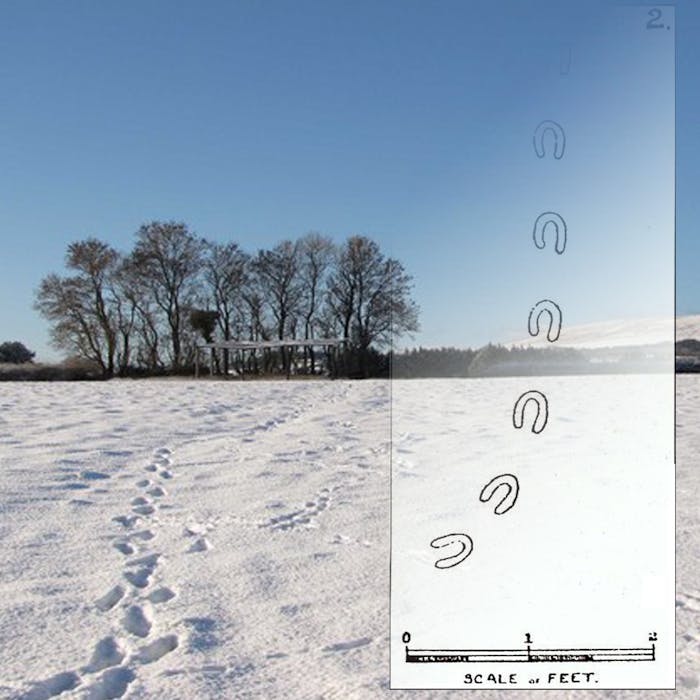
The "Devil's Footprints" of 1855
In 1855 the residents of south Devon were perplexed and alarmed to discover that some magical beast had been roaming their streets, graveyards, gardens and roofs during the night. Was it the Devil himself?
The winter of 1855 was unusually cold. From January to March any snowfall had little chance to thaw before another layer settled upon it. And on the morning of 9th February, the residents of south Devon opened their doors to discover a mysterious set of footprints ...
A trail of hoof-like marks in the snow marched in single file up to doors and through gardens. Each print was four inches long and three inches wide, and each step was eight to 16 inches apart.
The footprints passed over rooftops and through walls, as well as leading up to and exiting drain pipes as small as 4 inches in diameter. One set of prints were said to have bridged the River Exe, continuing on the other side as if the creature had walked over the water.
The trail was reported from 30 locations across Devon including Exeter, Torquay and Totnes, and even in Weymouth in Dorset. However, the footprints seem mainly to have been concentrated in south and east Devon, travelling from Exmouth to Topsham then across the Exe to Dawlish and Teignmouth.
The prints were most often described as being similar to a small donkey's, but there were some reports of cloven hoofprints - and soon people were saying the Satan himself had been roaming south Devon on that dark, quiet night.
It was estimated that the total distance of the tracks amounted to between 40 and 100 miles!
Residents, sometimes in armed groups, followed the footprints. Some traced the marks for miles, though without discovering anything that could explain them. There is a story that one local hunt tracked the footprints to a wood near Dawlish. The huntsmen sent in the hounds to corner the creature, but the dogs soon ‘came back baying and terrified’.
The mysterious event reached the national and international papers, including the Illustrated London News and The Times, and many of the great and the good put forward their explanations.
Richard Owen, the famous naturalist, suggested that the prints were the work of several hungry badgers. One Reverend G.M. Musgrave told his congregation at the time that it was a kangaroo that had escaped from a private zoo in Exmouth.
A suggestion from one writer in the early 20th century was that "an experimental balloon" had been released by mistake from Devonport Dockyard and had left the mysterious tracks by trailing two shackles on the end of its mooring ropes. His source was a local man, Major Carter, whose grandfather had worked at Devonport at the time. Carter claimed that the incident had been hushed up because the balloon also wrecked a number of conservatories, greenhouses, and windows before finally coming to ground in Honiton.
Sceptics have questioned whether the balloon could have travelled such a random zigzag course without its trailing ropes and shackles becoming caught in a tree or similar obstruction.
Though some of the prints could have been hoaxes, and some simply animal or bird prints - distorted by a thaw - a complete explanation of the "Devil's footprints" of 1855 remains elusive...
Background photo from Adrian Platt.
Further reading
Links to external websites are not maintained by Bite Sized Britain. They are provided to give users access to additional information. Bite Sized Britain is not responsible for the content of these external websites.
